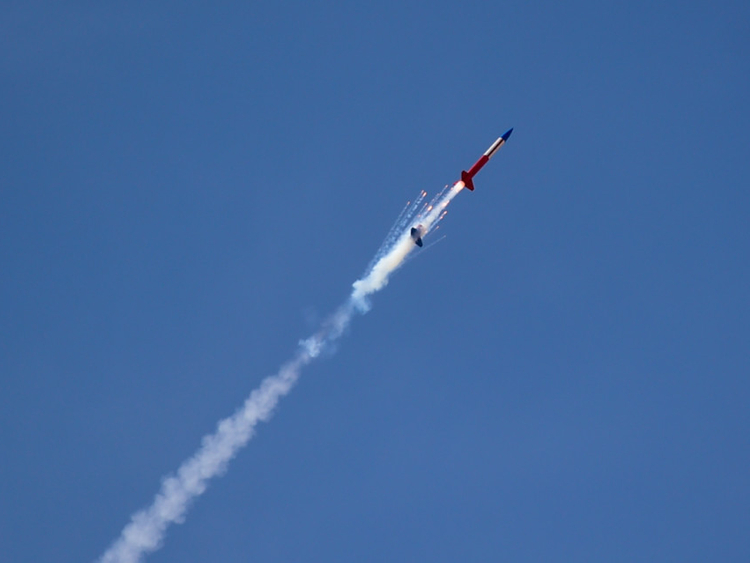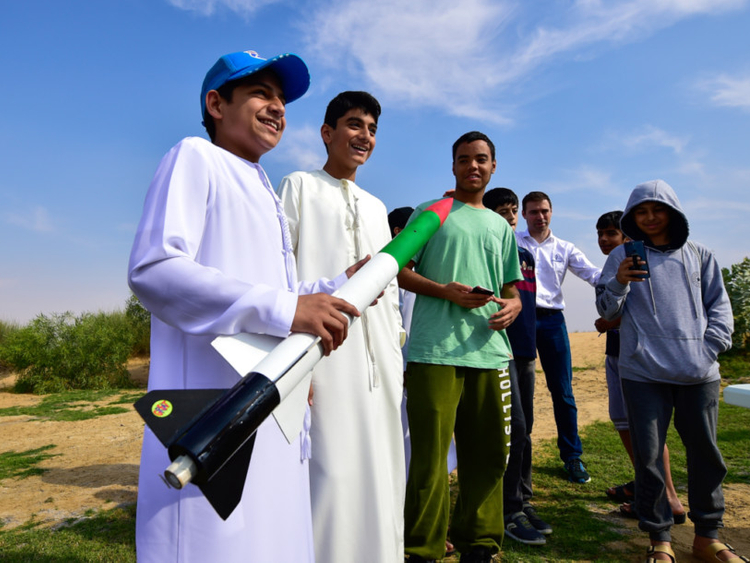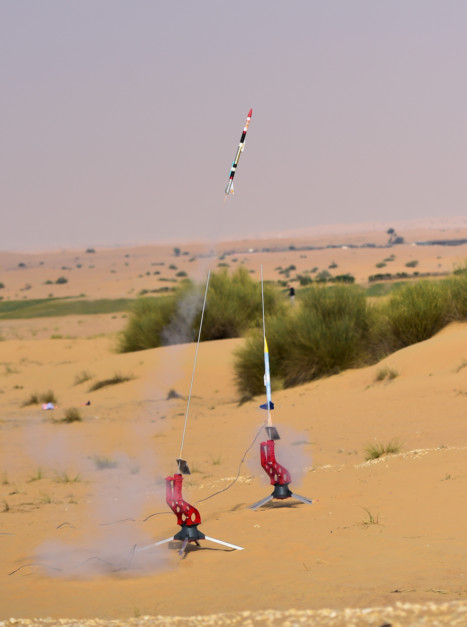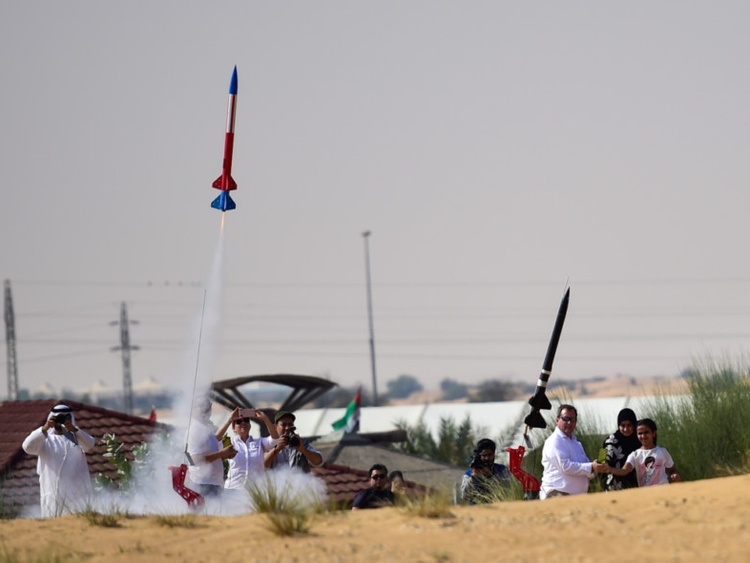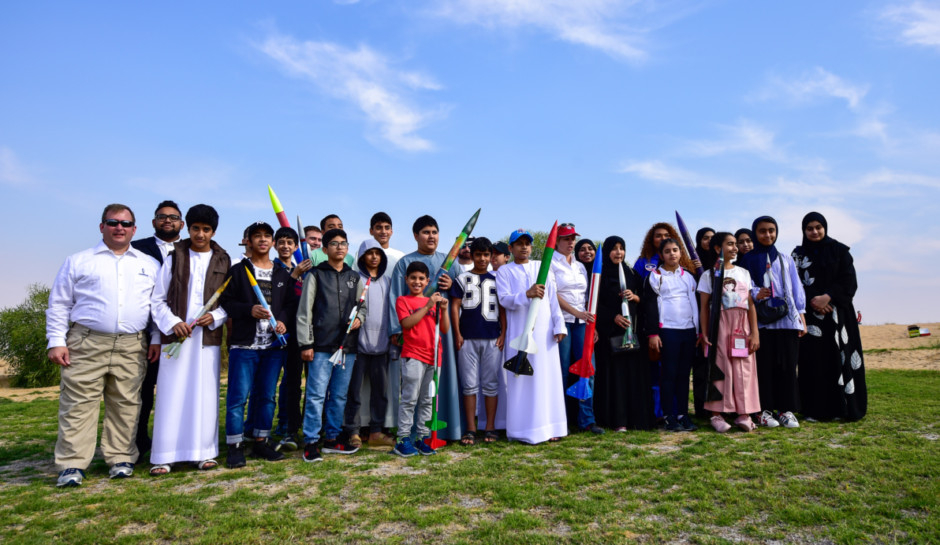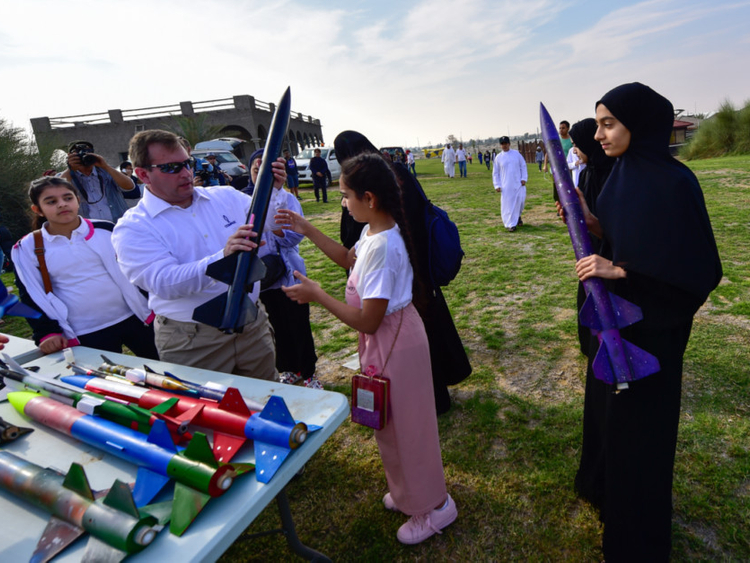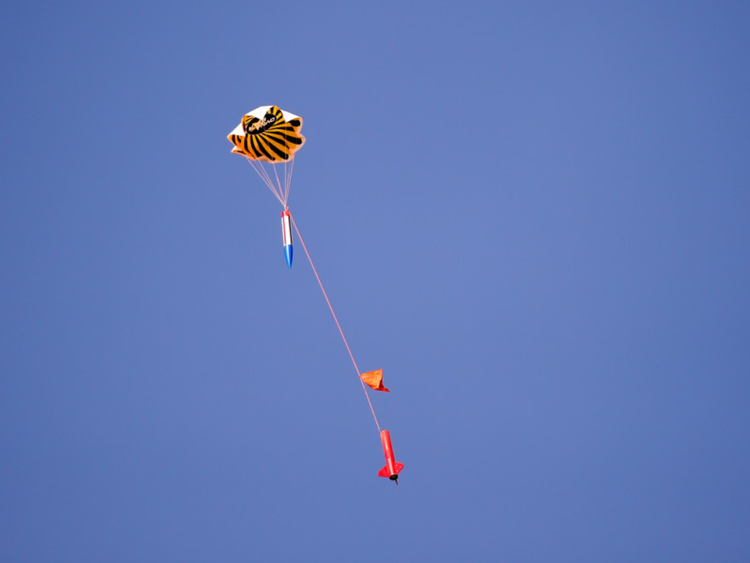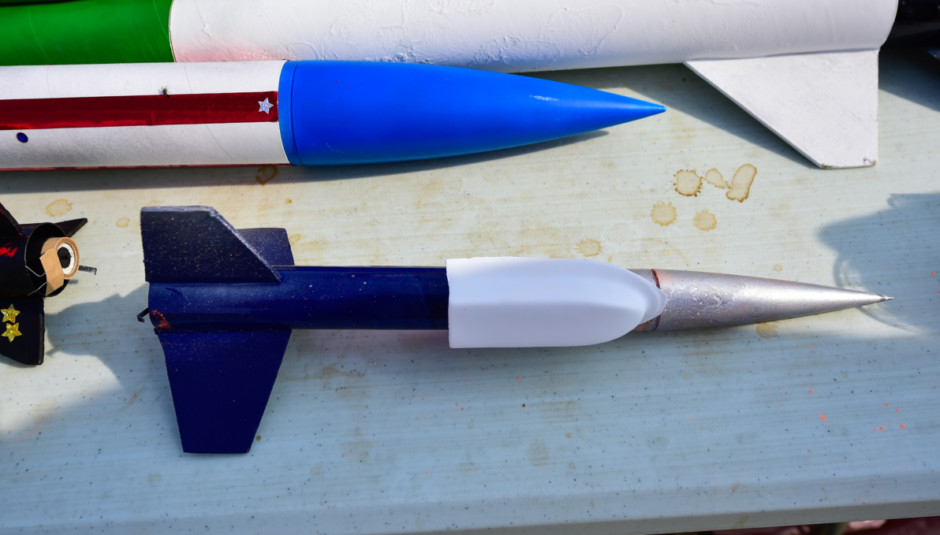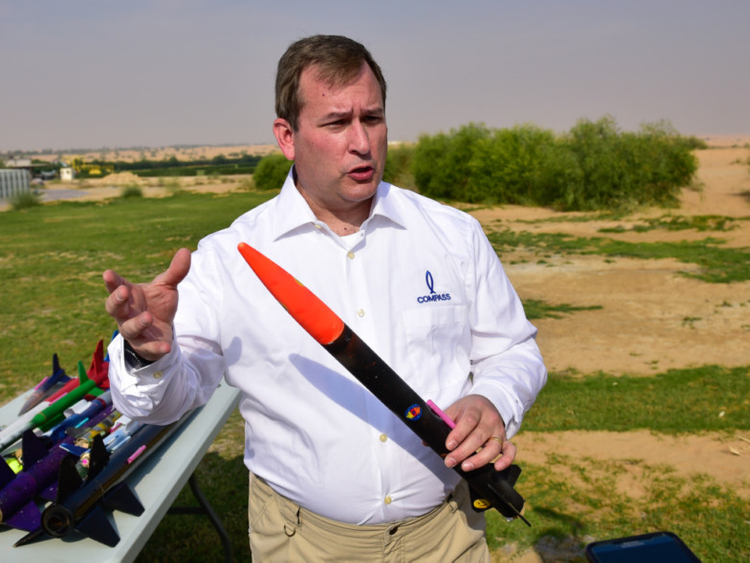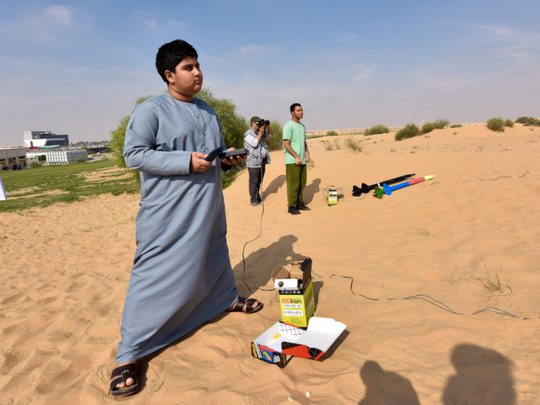
Dubai: Model rockets engineered and assembled by Emirati students were successfully launched on SkyDive Dubai Desert Campus on Wednesday morning, which showed the great potential of Emirati youth in aerospace engineering, an expert said.
Some 15 rockets made by Emirati students aged 10 to 16 were launched as part of their two-week “Go for Orbit: Mars!” science and engineering camp where they designed single- and multi-stage rockets using solid rocket motors.
The 20 students who participated in the programme were selected by the Hamdan Bin Rashid Al Maktoum Centre for Giftedness and Creativity, which also made special arrangements for the launch to be conducted in Dubai for the first time.
The model rockets, which are smaller in scale but are actual rockets, were propelled into the desert sky to fly to over 500 metres before parachuting back to earth. The students were divided into groups to build large two-stage AeroDactyl rockets and individual smaller one-stage rockets.
The first two rockets did not launch as planned and spun around without achieving its programmed height, but the others did, Michael Flachbart, strategic consultant with Compass International that developed the curriculum, said.
“This is very challenging for students this age. These skill-level rockets that we utilised are more advanced than normal beginner rockets,” Flachbart told Gulf News.
“The students did very well. They only had a few days to engineer, design and build these rockets and for the amount of work they put into them and the fact that probably about 80 per cent of the rockets worked and were launched was very good for their first try,” he added.
Students upbeat
Abdul Rahman Saeed’s two-stage rocket did fly but the “astronauts” in the form of eggs did not survive. It was an unforgettable experience nonetheless for the 16-year-old.
“It was a great feeling to see my first rocket launch into the sky. Building the rocket was great but the only thing that was challenging was the time — three days — which is a very short period of time,” the 11th grade student told Gulf News.
“After this, I look forward to working at the Mohammad Bin Rashid Space Centre to learn more things in this field,” he added.
Aisha Abdullah from Al Salam Private School was just as proud. The 14-year-old worked individually on a small singe-stage rocket.
“It was a really proud moment working on such a huge project for around two weeks. Actually seeing it fly is a great feeling,” Aisha said.
Noor Abdullah Omar’s rocket failed to launch on the first try after getting disconnected. But it did go off after the second try. She said: “My plan is to learn from my mistakes and try to build it again but not to have the same mistake.”
The same goes for Alya Mohammad Al Merri, the youngest in the group, and Mariam Omar Mohammad Saeed, 13. Both are determined to build the best rockets in the future.
Flachbart said the engineering and fabrication skills of the students in the UAE are very high, which is a good indicator since the UAE just recently launched its national space programme.
“My assessment now is these students are in good shape if they continue their studies and work hard and go on to a university and get their degrees, they’re gonna be well positioned to work in the aerospace sectors in the UAE and help with the programme within 20 and 30 years. Some of these students can be the first ones to go to Mars or walk on Mars one day.”
BOX: Susan Bell from Nasa, who was present to train the students, explains how the rockets work:
In each rocket is a motor, a solid rocket propellant that is used in real rockets. This is just a smaller version of a big rocket. It has all the same characteristics with fins, a launch log, it’s got a parachute recovery system, and the engine is placed at the bottom that will ignite.
Once you press the launch button, an electrical charge will ignite the engine to propel it upwards. For the two-stage rockets, the black stage will fire and it will ignite the second stage which will then shoot up as well. There will be about a six-second delay and then the parachute will deploy.


